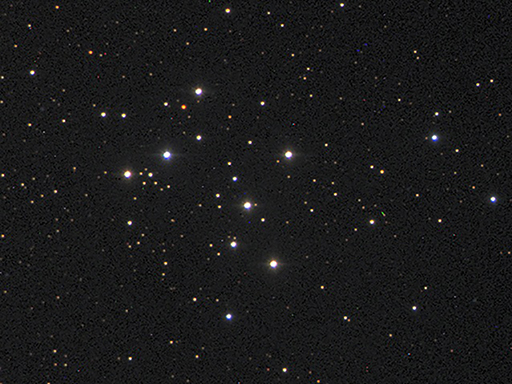4 Comparing the Sun with other stars

Full resolution video here [Tip: hold Ctrl and click a link to open it in a new tab. (Hide tip)]
This time-lapse sequence, shot over three hours, shows the Milky Way setting behind the COAST telescope dome. The telescope itself can be seen moving as it takes images of different selected targets.
The Milky Way contains some two hundred billion stars and, as you can see in the footage above, they are very diverse, with a wide range of colour and brightness. Some of the difference in brightness comes about because the stars are at very different distances (all else being equal, stars further away will appear fainter than stars close by) – but stars also vary significantly in their intrinsic brightness, from stars much less luminous than the Sun to stars many thousands of times brighter.
Activity _unit6.5.1 Activity 5 Properties of stars
Bearing in mind what you have learned this week, and after watching the video, make a list of all the ways you think stars might differ from one another. When you have completed this, click below to view our list.
Answer
Differences between stars could include (intrinsic) brightness or luminosity, colour (or temperature), mass, size (or radius), age, density, their composition and their degree of variability.
One way of separating out the intrinsic properties of stars from other effects – such as distance – is to compare stars within a cluster, such as one of the Messier clusters you may have taken an image of with COAST. The advantage of studying clusters is that they are fairly compact so, to a good degree of approximation, all the stars in the cluster are at the same distance from Earth. This makes clusters the perfect place to study stars for three reasons:
- All the stars within a single cluster being at the same distance means that any differences in brightness as seen from Earth must be caused by differences in the intrinsic brightness of the stars, and not by distance effects.
- All the stars were formed at the same time and so are of the same age.
- All the stars were formed from the same cloud of material and so their chemical compositions should be similar.
Look at this image of the open cluster M29, taken with COAST:
What do you notice about the colours and various levels of brightness of the stars in this image ?
Answer
The brighter stars in the cluster are white, with the brightest ones having a bluish tinge. The medium brightness stars are yellower with some of the fainter stars having an orange or even reddish tint. If it were a member of this cluster our own Sun, with its yellow colour, would be neither the brightest nor the faintest star in the range – it is a fairly typical star of modest temperature and brightness.
The answer to Activity 5 suggests that there is a relationship between the colour of stars in the cluster and their intrinsic luminosity, or brightness. As you have seen in Section 2, the colour of a star is related to its temperature, with hotter stars appearing whiter and bluer, and cooler stars appearing yellower and redder. This is a really important observation as it suggests that the temperature and luminosity of stars are related to one another. In other words these properties are correlated. you will explore this relationship further next week.

